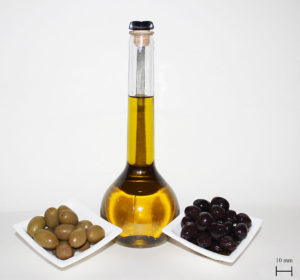 Olive oil, the liquid gold essential to Italian and other Mediterranean cuisines, existed in Italy much earlier than previously thought, according to Davide Tanasi, an Italian researcher and assistant professor of history at the University of South Florida. By analyzing residue found on a Bronze Age ceramic jar that was found in Sicily in the 1990s, Tanasi discovered that olive oil in Italy is at least 4,000 years old. Previously, the earliest traces of olive oil in Italy were found in storage containers in Lecce and Cosenza, believed to be from the Copper Age (12th and 11th century BCE).
Olive oil, the liquid gold essential to Italian and other Mediterranean cuisines, existed in Italy much earlier than previously thought, according to Davide Tanasi, an Italian researcher and assistant professor of history at the University of South Florida. By analyzing residue found on a Bronze Age ceramic jar that was found in Sicily in the 1990s, Tanasi discovered that olive oil in Italy is at least 4,000 years old. Previously, the earliest traces of olive oil in Italy were found in storage containers in Lecce and Cosenza, believed to be from the Copper Age (12th and 11th century BCE).
The large vessel, found at an excavation site in Castelluccio, Sicily, by Giuseppe Voza, had three handles on each side and a septum to indicate it held multiple substances.
“It had the signature of Sicilian tableware dated to the end of the 3rd and beginning of the 2nd millennium BCE (Early Bronze Age),” said Tanasi.
Tanasi’s team of researchers were curious about the use of the egg-shaped, 3.5-foot jar, so they tested the traces of organic residue on three samples of pottery. On all three pieces, they found traces of oleic and linoleic acids – key components of olive oil.
“The results obtained with the three samples from Castelluccio become the first chemical evidence of the oldest olive oil in Italian prehistory, pushing back the hands of the clock for the systematic olive oil production by at least 700 years,” said Tanasi.
Olive trees are native to the Mediterranean basin and have grown there since the 8th millennium BCE. The oldest-known olive oil in the world, dating back about 8,000 years, was discovered in Israel in 2014.
Spain is the world’s largest producer of olive oil at 1.7 million tons or 56%, followed by Italy and Greece. The country that consumes the most olive oil per year is Greece, at 24 liters per person, followed by Spain and Italy, with 14 liters per person each.
By Kathy McCabe
